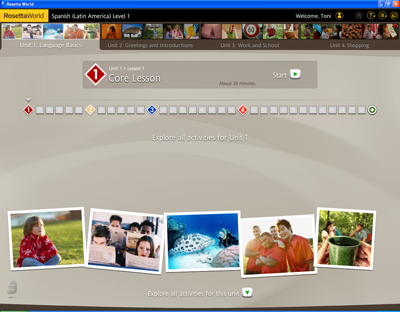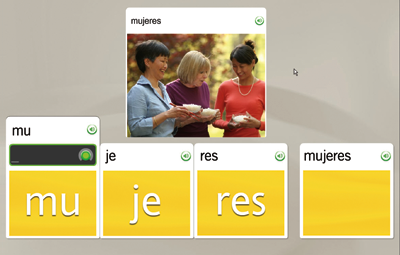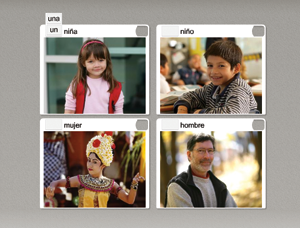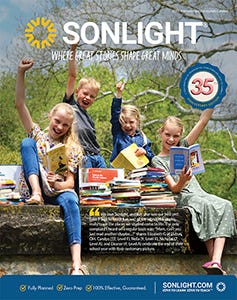We use cookies for performance, analytics and marketing. By using this site, you agree to our use of cookies. For more information, view our Cookie Notice and Privacy Policy.
Why does Sonlight recommend Rosetta Stone?
Don't just learn to translate ... learn to truly understand a new language—listen, speak, read and write (even pick up some grammar) by playing this puzzle-game with patient native speakers who never tire.

For every lesson in any unit, you can easily see how much progress you've made—and quickly review any part you like.
I find Rosetta Stone attractive, first, because of the way it engages my mind. It is a puzzle: difficult but not unsolvable. In fact, I am guaranteed success at every turn if I will just stick with it.
I like Rosetta Stone because the program motivates me. All the other programs I've ever tried are more or less "fun" or "pleasant" to work with. But this is the first one that makes me want to learn. It's the first one that provides internal rewards for doing a good job.

Your native-speaking guides patiently repeat every syllable of every word—as often as you want!
I like it because Rosetta Stone mimics what I'd experience if I were living in a foreign country trying to figure everything out for myself... Except it is NOT like living in a foreign country, because the speakers are unbelievably patient with me—and will keep repeating themselves, and giving me clues, until I can figure out what they are saying.
I like it because the photos are interesting. And with the new Version 3, the producers have collected more new photos of people, objects and events from around the world and all walks of life—fascinating stories, frozen in a moment.
I like this program because it is a game. It keeps me competing (against myself), yet without excessive pressure.
I like Rosetta Stone because the program teaches me to understand the language—without translation. In other words, I am never encouraged to think of a word in English and then correlate it to the word in the foreign language. Instead I see, and immediately understand, what the speaker is talking about.
I like this program because it permits me to:
- learn how to LISTEN and understand native speech.
- learn how to READ the language (same method as what I have just described, only using written words instead of spoken).
- learn by reading and listening at the same time.
- learn to SPEAK the language, by practicing with a "graphical speech analyzer" that gives me at least a minimal amount of feedback about how my speech compares with the native speaker to whom I've been listening.
- learn and practice how to WRITE the language. Dictation exercises (spoken by the computer and typed by me into the computer) permit the program to evaluate my spelling, syntax and punctuation. The computer checks my work, indicates mistakes I've made, and lets me correct them.
- learn a bit of grammar, too! Rosetta Stone does NOT teach grammar to the same degree that you might find in a traditional classroom. But with the program specially enhanced with tools for homeschoolers, you can definitely can better equip students who may desire to continue foreign language study in a classroom setting. (By the way, Sonlight does not offer the "Personal Edition," which omits these tools—and costs just as much.)

In this screen image (above), the Rosetta Stone Latin American Spanish program delivers a clue to the "feminine" nature of some words.
Please Note:
- All Rosetta Stone speakers are native speakers of the language. There are both masculine and feminine speakers.
- You may wish to supplement Rosetta Stone with grammar instruction if your student intends to, at some point, study foreign language in a classroom setting.



